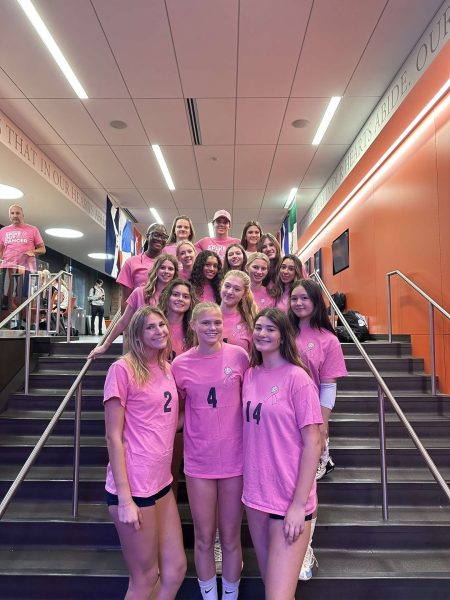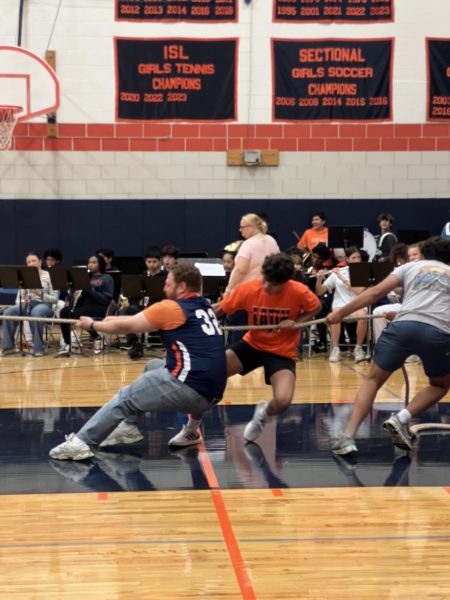A Balancing Act: Teaching While Parenting
April 25, 2020
As schools across the country close due to COVID-19, many are transitioning to e-learning as the new standard for educating children. Here at Latin, this transition includes an adjustment to a new reality for both teachers and students. A sizable share of Latin teachers have children, some of whom are very young and less independent. In these unprecedented times, how do teachers still provide a high-quality learning environment while parenting their own kids at home?
Most teachers never imagined their classrooms would literally shift to their kitchen table, with their students in a Google Meet or Zoom call. However, Latin teachers have quickly shifted gears and developed plans adjusting to these new circumstances. Dr. Hooker, a math teacher, notes that “juggling both teaching and parenting from home has been a challenge.” Normally, school keeps her kids occupied throughout the day and relieves the mental and physical load off of parents. Now with everyone at home, teachers are working hard to devise student assignments, upload them to RomanNet, provide timely feedback, and help their own children with their homework. Ms. Kutschke, a biology teacher, adds that she has been “prepping, planning, and grading at night and on the weekends.”
Students are becoming more accustomed to occasional guest appearances from faculty kids and pets. Freshman Leo Romano’s teacher’s daughter stopped by for a virtual visit during class and asked, “Mommy, can you make me some lunch?” Leo says, “My friends and I were very understanding and supportive of her situation.” Of course, the class continued, but more than ever, it is important for students to be supportive of teachers grappling with constant multitasking.
As students search for normalcy, many teachers express that being together as a family is a big bonus to e-learning. Ms. Amusin, a math teacher, said she has been able to spend a lot more time “doing family art and cooking more meals together.” Furthermore, Ms. Durant, a performing arts teacher, has “loved spending more time watching them [her children] learn and grow and bond with each other.” While socially distancing is the new norm, building positive family interactions, and home life experiences are vital during this time.
While most students spent their spring breaks sleeping in, playing video games, and binge-watching Tiger King, Latin teachers and administrators were hard at work devising a sustainable remote learning plan. Mr. Greer began his process by sitting in on webinars centered around e-learning with some of the first schools to close around the country. He soon realized the schools that “held all or most of their classes synchronously moved away from that, because it proved exhausting and unsustainable for all involved.” With fewer synchronous commitments, teachers can allocate their time to focus on the success of remote learning and the well being of students, staff, and their families. Mr. Oommen, the middle school computer science teacher, says, “As a family, we have been watching movies, staying active outside, and playing board games.” He is grateful for the flexible schedule, as it allows him to focus on not only developing a rigorous plan for his students but also his children.
As brave essential workers continue to report to work each day, their families stay at home with unfamiliar circumstances. Chemistry teacher Mr. Legendre and his wife, Latin teacher Ms. Legendre, are currently taking care of their family member’s 20-month-old child, whose mother is an infectious disease physician assistant. Mr. and Ms. Legendre have children of their own, so caring for another child who is much younger has some challenges. Mr. Legendre says he is “lucky to have relatively older children who can manage their responsibilities.” Additionally, after careful planning during spring break, Mr. Legendre was able to schedule all of his synchronous obligations during two days of the schedule so he could be a more present teacher, spouse, parent, and uncle. “I think the guidelines put forth by Mr. Greer (4 asynchronous + 2 synchronous as the expectation) really helped me find balance,” says Mr. Legendre. Some of the other flexible guidelines put in place include the option for teachers to hold daily office hours after school, divisional meetings, and the reduction of narrative grade reports. Math teacher Ms. Ilkhchi appreciates “Latin’s willingness to listen to the faculty and provide tools to make this work best.”
Despite the challenging times we all find ourselves in, we should remind ourselves to be patient and flexible. Our teachers are making every effort to preserve normalcy both at school and at home. Give them a virtual “elbow bump” and thank them for their hard work!






















































